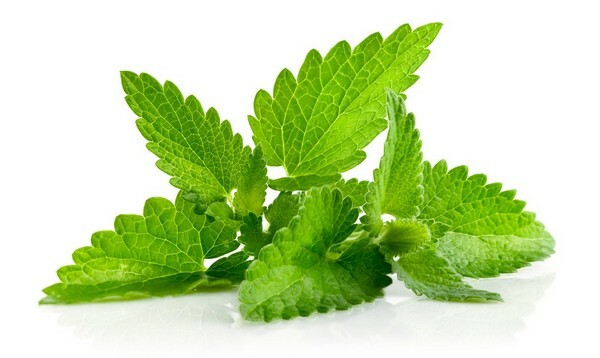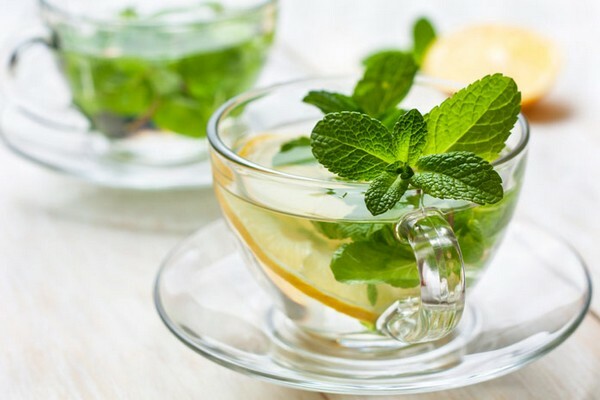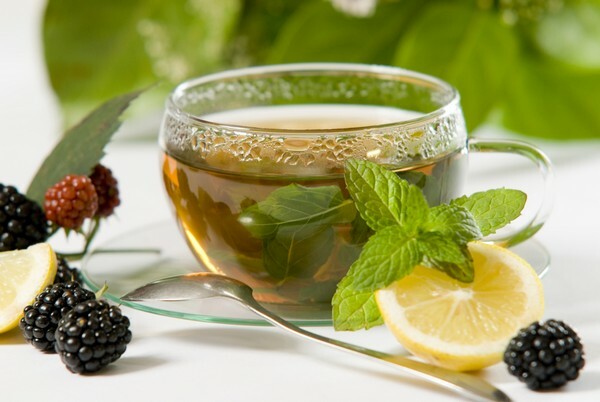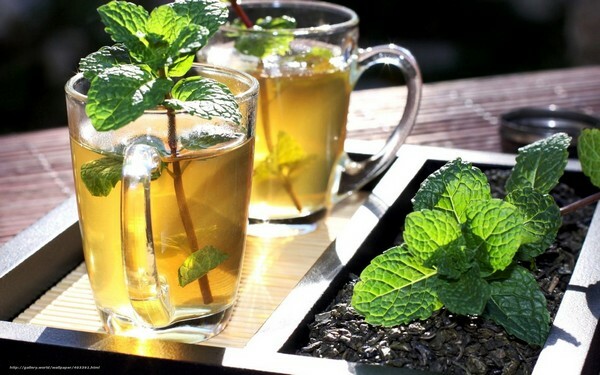Contents:
- Characteristics of the medicinal plant
- Chemical composition
- Harm and contraindications
- Harm to men
- Benefits and indications for use
Delicate mint leaves with menthol aroma are actively used in cooking and cosmetology, but the widest range of applications is medicine. The medicinal plant is a part of many pharmacological preparations that are used in the therapy of cardiovascular pathologies and neurological disorders. Fragrant tea helps to normalize digestion and peristalsis, restore optimal functioning of the liver and gallbladder. The benefits and harmfulness of mint are due to the chemical compounds that make up it. They can have a positive effect on the body of one person and provoke a relapse of a chronic disease in another.

. Characteristic features of the medicinal plant
Peppermint, lat. Mentha piperita, is a member of the extensive family of Yasnotkovs, all of whose representatives contain a high concentration of essential oils. Thanks to the availability of menthol, a perennial herbaceous plant is grown on an industrial scale in the Krasnodar Territory and in the Voronezh Region. Dried and fresh raw materials are supplied to pharmaceutical factories for the manufacture of popular drugs Validol and Valocordin, used in the therapy of angina pectoris, neuroses, insomnia. Essential oil is also included in various dragees, lozenges and lozenges to eliminate sore throats.
This is interesting: Peppermint is a hybrid obtained by spraying its aquatic and garden varieties. As a result, a plant with a unique chemical composition providing high therapeutic efficacy and a small number of contraindications was excreted.
Rhizome in mint is long and branchy with thin fibrous roots. The height of the stem can reach a length of 1 m, but usually on the garden area grow small lush bushes to 30-40 cm in early-mid summer on the plant formed spike inflorescence, and then the buds of tender violet color. It is at this time should start to collect and dry mint for further use for medicinal purposes. During the flowering period, a huge amount of biologically active substances accumulated in the plant, which, when brewed, are transformed into teas, infusions and decoctions.
Chemical composition of
Qualitative and quantitative composition can vary slightly depending on the place of growth and maintenance of peppermint. The most valuable bioactive substance is essential oil, from which menthol is obtained - an organic compound, an important secondary metabolite. The plant is also cultivated because of the presence in the young leaves of flavonoids, hesperidin and rutin, which are active ingredients in preparations for the treatment of thrombophlebitis, hemorrhoids and venous insufficiency. Also in the chemical composition of mint contains the following useful compounds:
- coffee, chlorogenic, ursolic and oleanolic organic acids, preventing atrophy of striated muscle fibers in old age;
- bioflavonoids, which strengthen large and small blood vessels due to increased tissue production of collagen and elastin;
- essential oil, which, in addition to menthol, contains citral, geraniol, carvacrol, terpinene, limonene, which impart analgesic and antispasmodic properties to tea from mint;
- water- and fat-soluble vitamins - ascorbic, folic, nicotinic acids, retinol, tocopherol, taking part in all biochemical reactions in the human body;
- microelements iron, copper, potassium, zinc, molybdenum, which accelerate metabolism, contribute to the rapid regeneration of damaged tissues.
For physicians, the high content of phytosterols, or phytoestrogens, in plant raw materials is also of interest. Bioactive substances normalize the hormonal level, have a positive effect on the condition of the veins, arteries and capillaries, remove from them harmful triglycerides.
Note: Infusions and extracts of peppermint are widely used in cosmetology due to the presence of rhamnose monosaccharide in them. They help to increase the elasticity and elasticity of the skin, minimize the number of fine wrinkles, improve the complexion.
In the chemical composition of peppermint, betaine is discovered - one of the simplest amino acids, the glycine derivative. The organic compound is capable of restoring damaged liver cells, stimulating bile secretion. Regular intake of aromatic peppermint tea serves as an excellent prevention of the formation of sand and large concretions in the kidneys, bile and urinary bladder.

Harm and contraindications
For many people, the use of a mint drink has become a habitual daily ritual. Fresh leaves are added to green and black tea, berry fruit drinks and fruit compotes to enhance the taste and aroma. But do not forget that mint is a medicinal plant, and its bioactive ingredients can gradually be cumulated in the human body. It is the ability to accumulate that causes the development of many side effects of mint:
- headaches and dizziness;
- dyspeptic disorders;
- blood pressure drop.
If you drink a cup of mint tea during the day, then it will only benefit, will serve as a preventative for various infectious and inflammatory pathologies. But the excessive use of fragrant infusions will have a negative effect on the human body. For example, taking 100-150 ml of peppermint tea will prevent excessive gassing and epigastric pains, despite the caloric intake of food eaten. But if you drink a few cups of mint infusion, then after 20-30 minutes there will be a severe heartburn due to the negative effect of essential oil on the mucous membrane of the stomach.
This same biologically active substance is the cause of a categorical ban on the use of mint during the bearing of a child, especially in later terms. Essential oil relaxes the musculature of the uterus, which can provoke:
- miscarriage;
- uterine bleeding;
- premature delivery.
Sometimes gynecologists recommend that women in the 1 trimester of pregnancy drink a cup of mildly mint tea a day to reduce the symptoms of toxicosis. But using this technique to eliminate nausea and vomiting can only be prescribed to the doctor after the examination of the patient.
Warning: Any medicinal form of peppermint is not given to patients who have individual sensitivity to menthol because of the high probability of developing an allergic reaction - urticaria, atopic dermatitis, bronchospasm.
Virtually all chemical compounds from mint have a relaxing effect on the human body due to the expansion of blood vessels and a decrease in heart rate. Therefore, teas and infusions are contraindicated to hypotension. The use of mint drinks will lead to a sharp drop in blood pressure, which can cause serious damage to human health, causing dangerous falls. "

Harm to children
The benefits and harm of tea with mint for children are also determined by the volume and concentration of the drink consumed throughout the day. During respiratory viral or bacterial infections, some mothers and dads want to protect the child from taking pharmacological drugs, sometimes showing pronounced side effects. They can give the baby a mint infusion for:
- better sleep;
- increased appetite;
- eliminating abdominal pain.
Such methods of treatment often lead to severe consequences, which doctors have to eliminate. The fact is that all medicinal plants can be used in the therapy of children only over 12 years old. Before this age, all the vital systems of the child are formed. He has reduced resistance to infectious and allergic agents, and the permeability of blood vessels opposite is very high. In addition, in children metabolic processes occur much faster than in adults. Therefore, offering the baby a mint tea, the parents run the risk of not achieving the same result that they expect.
Recommendation: You can buy special children's teas with mint in pharmacies. Their composition is adapted to the children's body - added useful ingredients, and harmful substances removed. Manufacturers have reduced the concentration of essential oil - the main cause of allergies in children.

Harm to men
Peppermint has long been considered a female herb because of its high content of phytoestrogens - plant analogues of estrogens. Men who consume aromatic tea to reduce pressure or stabilize the psychoemotional state, greatly risk their libido and potency.
Important: Regular intake of mint drinks reduces the production of testosterone in the male sex hormone. Over time, in the representatives of the strong half of humanity, the hairiness begins to occur according to the female type - the vegetation on the chest, legs and hands disappears.
In men who are accustomed to drinking a lot of mint tea, the following negative signs are also noted:
- potency deteriorates;
- reduces the duration of sexual intercourse;
- decreases sexual attraction to the opposite sex.
It is worth to clarify that this result leads to the abuse of mint drinks - from one cup of tea the potency does not decrease. But if a man prepares to conceive, it should completely abandon mint in the diet, as this will positively affect the qualitative and quantitative characteristics of the sperm.
Use and indications for use
Peppermint is used in the therapy of pathologies of almost all human systems. Vegetable tea has spasmolytic, mucolytic, regenerating and aseptic effect. Phytoncides from the composition of mint have the ability to restrain the growth and reproduction of pathogenic microorganisms - bacteria, viruses, fungi, and also to stop inflammatory processes. Fragrant drink not only stabilizes the work of the gastrointestinal tract, but also cleans it from accumulated slags, toxins, uncleaved metabolic products. Specialists of official and traditional medicine prescribe patients mint tea in diagnosing such pathologies:
- ulcerative colitis;
- chronic diarrhea or constipation;
- neuralgia;
- dental and headache;
- angina;
- respiratory infections;
- irritable bowel syndrome;
- infectious and inflammatory pathologies of urinary organs.
Infusions can be used in the treatment of hepatitis and cholelithiasis, but only after consultation with the attending physician. With some forms of liver disease, excessive intake of essential oils in the body will only bring harm. And an attempt to remove a large calculus from the gallbladder provokes a rupture of the bile duct or a large blood vessel.
Tip: Peppermint essential oil will help to eliminate nasal congestion and flow. A couple of drops of a fragrant product can be added to the water for wet cleaning or put them on a cotton pad and put on the radiator.

Catarrhal diseases
Benefits and harm of jam from mint are identical to what tea makes from a medicinal plant. But the taste characteristics of a thick and sweet product is much higher. Prepare a fragrant and useful jam for this recipe:
- 500 g of washed and dried leaves should be mixed with 0.6 kg of sugar and a tablespoon of lemon juice;
- leave for 2-3 hours to completely dissolve the granulated sugar;
- from 0.7 kg of sugar and 250 ml of water should be welded a thick syrup and add to the mint mixture;
- after infusion for 4-5 hours, boil the jam for 10 minutes.
Therapists and otolaryngologists recommend eating a tablespoon of jam 2-3 times a day during treatment of influenza, angina, sinusitis, bronchitis, tracheitis, bronchiolitis. Essential oils and bioflavonoids from the mint chemical composition stop inflammation, destroy pathogenic microorganisms, and remove accumulated sputum from the respiratory tract.
Gynecological pathology
The ability of peppermint to stabilize the hormonal background allows it to be used as an aid in the therapy of various diseases of the female reproductive system:
- endometriosis;
- mastopathy;
- uterine fibroids.
Mint drinks reduce the intensity of pain during menstruation, eliminate the symptoms of menopause: hot flashes, irritability, tearfulness, excessive sweating, dizziness. Aromatic tea is used to normalize urination in chronic cystitis.1-2 cups of mint infusion relieve a woman from the cuts and burning during each emptying of the bladder, as well as from the uncomfortable sensations in the lower abdomen. To make tea, put a teaspoon of dry vegetable raw materials or 5-4 fresh leaves in a teapot, and then pour a glass of boiling water. After 30-40 minutes, the curative infusion is ready for use.
